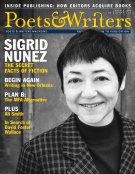Literary purists have long criticized movies adapted from classic novels. It seems some people just don’t want to see Kate Winslet’s face superimposed on their vision of Jane Austen’s Marianne Dashwood. For those who don’t mind Hollywood versions of great literature, however, a new series of novels packaged with the DVD recordings of the films they inspired allows for a side-by-side comparison.
Signet Classics and Chamberlain Bros., two divisions of Penguin, partnered in September 2005 to release the first six books in the series, including Tolstoy’s Anna Karenina, packaged with the 1948 film starring Vivien Leigh in the title role, and Hawthorne’s The Scarlet Letter, which includes the 1934 movie version (not the 1995 version starring Demi Moore). Of Human Bondage by W. Somerset Maugham, the film adaptation of which stars Bette Davis, is forthcoming in April. Each book includes an essay and discussion points written by New School University screenwriting professor William Pace; each DVD features a filmed introduction contextualizing the work by former Premiere film critic Susannah Gora.
“Both art forms complement each other very well,” says Gora. “The book is always going to provide certain details that the movie can’t—with movies, you’re actually watching the story with your eyes, and hearing the characters with your ears. It’s such an immediate forum for the story to be told.”
The new Chamberlain Bros. editions of Signet Classics will compete in an already crowded field of classics publishers vying for trade sales as well as the all-important academic market share, including Random House’s Modern Library and even sister company Penguin Classics, publisher of the best-selling, Oprah-approved edition of Anna Karenina.
While the new editions might grab curious adults and shortcut-seeking students, there’s no escaping their higher cost. Previously published mass- market editions of the above titles are priced as low as $3.95, whereas the trade paperback–size editions in the new series sell for around $15. Still, the book-DVD series is another example of the ways in which book publishers are trying to attract readers with “value-added” extras, such as audio CDs, author interviews, and book-club guides.
“If one of these other mediums can inspire people to pick up a book, then that’s what we should be doing to introduce people to literature,” says Jessica Callahan, the associate editor at Chamberlain Bros. who is editing the series. It is an ironic twist on the battle between books and visual media, with publishers now using the very medium that helped shift the focus away from reading for pleasure as a tool for shifting it back.
“Hollywood used to fall back on the idea that everybody read the classics, utilizing the stories people knew to draw them into the theaters,” says Callahan. “Now, publishing has to fall back on Hollywood to lure people into reading.”
Doug Diesenhaus is the editorial assistant of Poets & Writers Magazine.








